https://www.instructables.com/Teardrop-Camper-Homemade-With-Plywood/


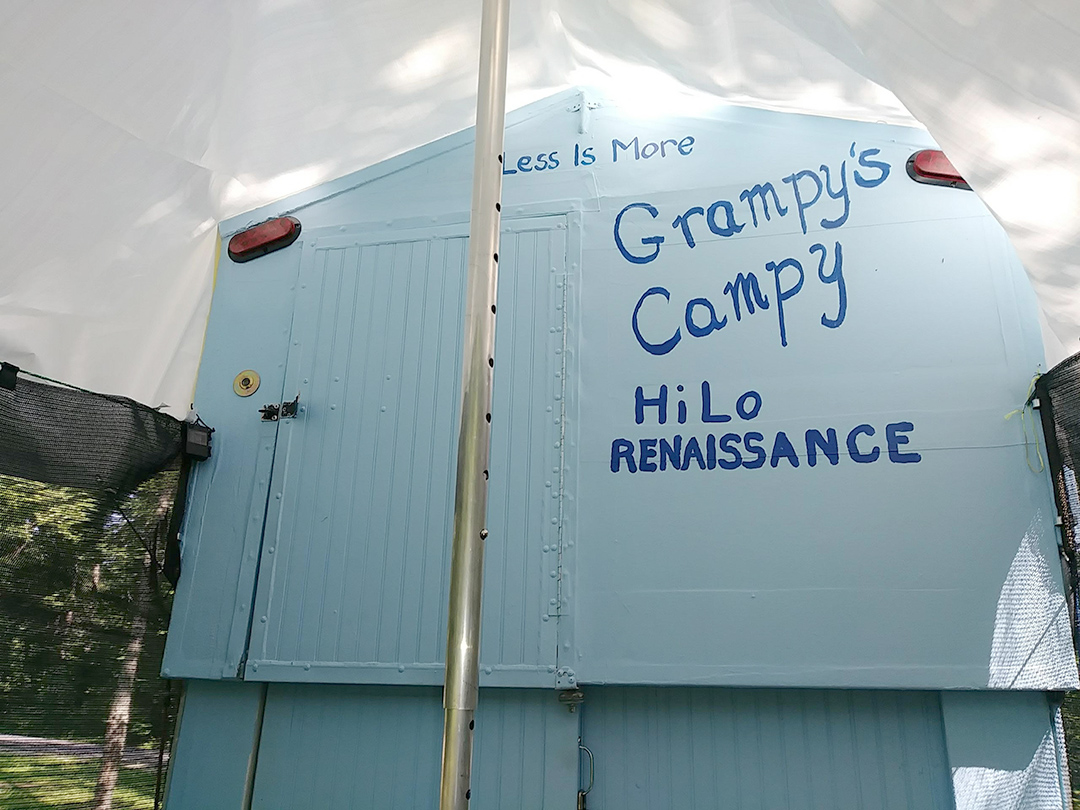
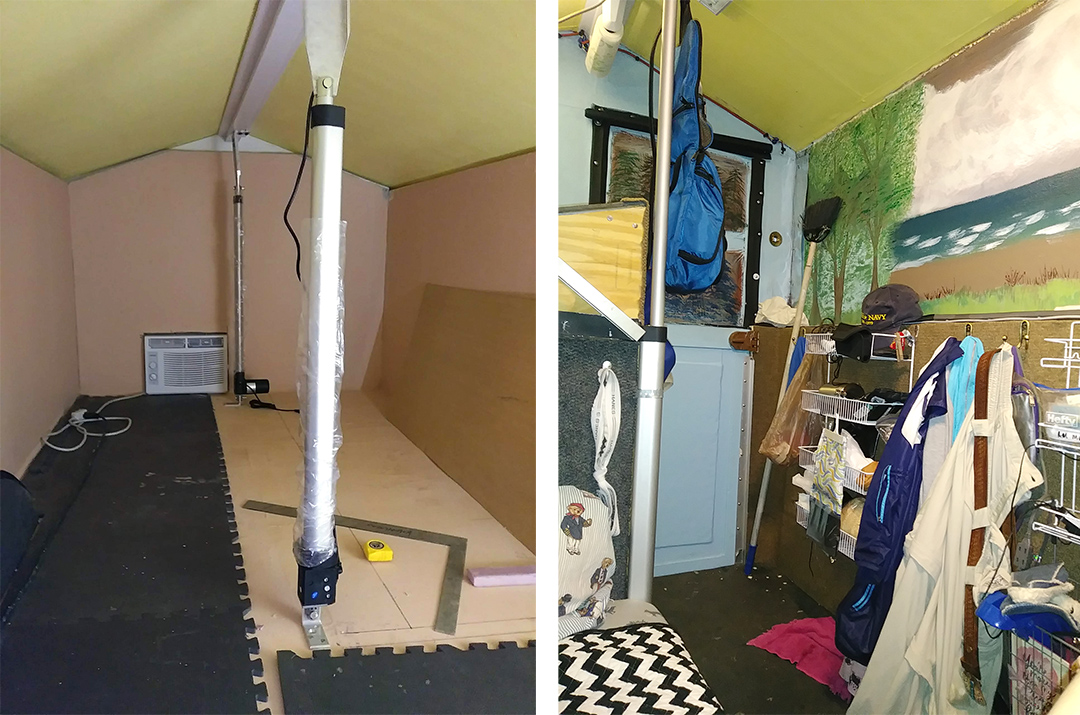
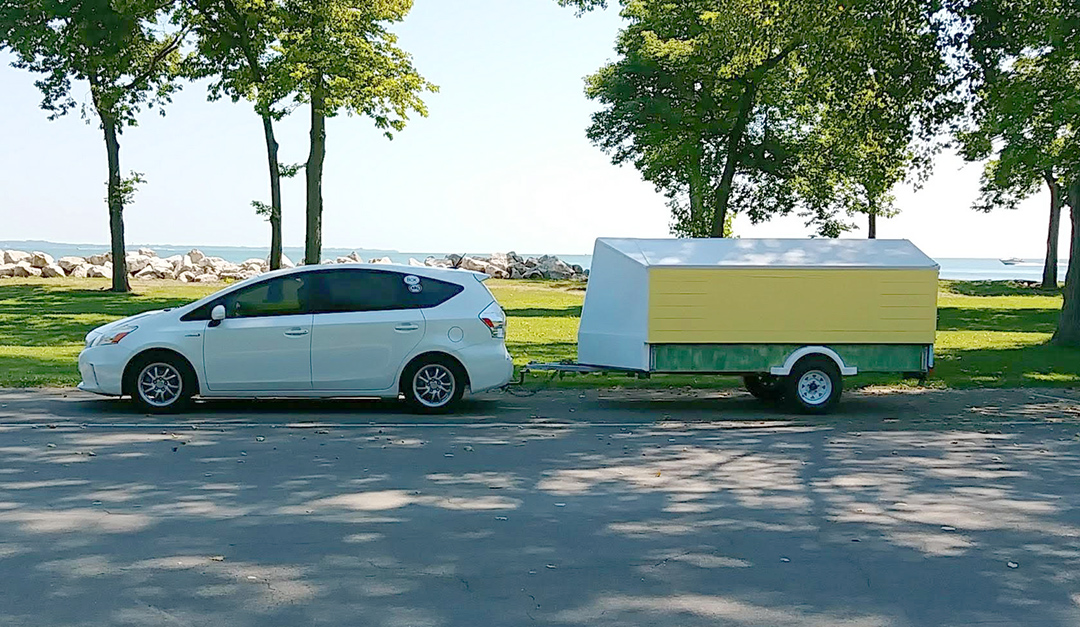
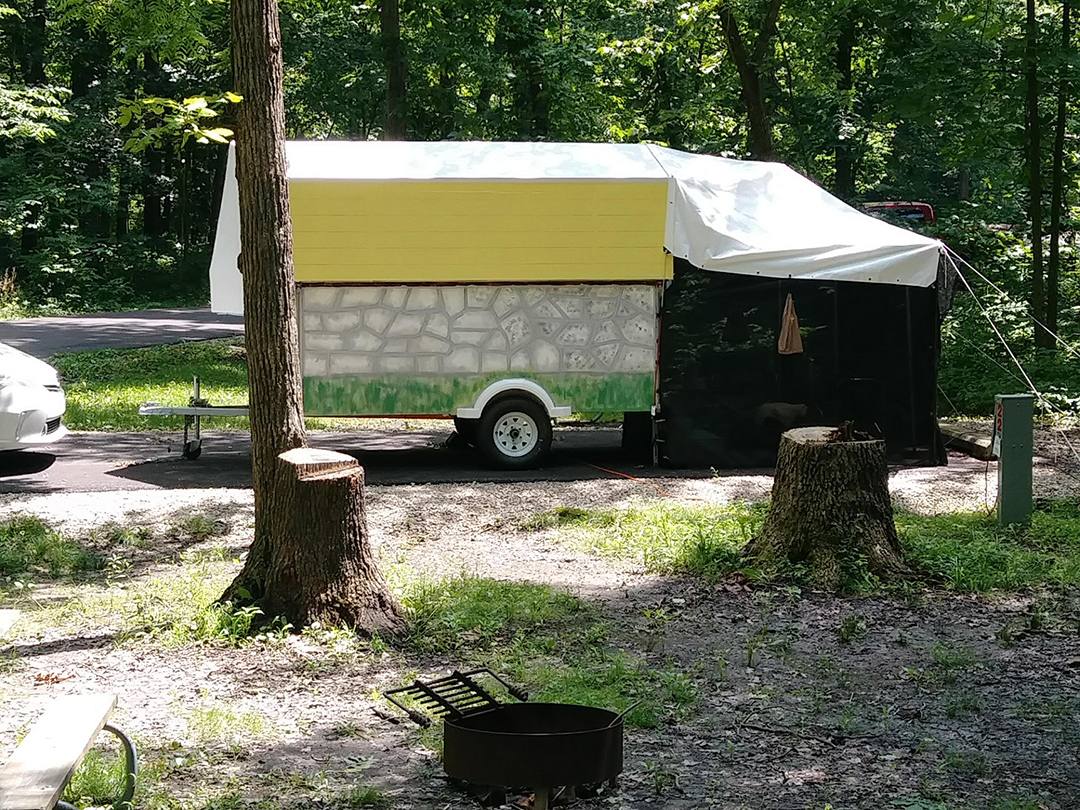
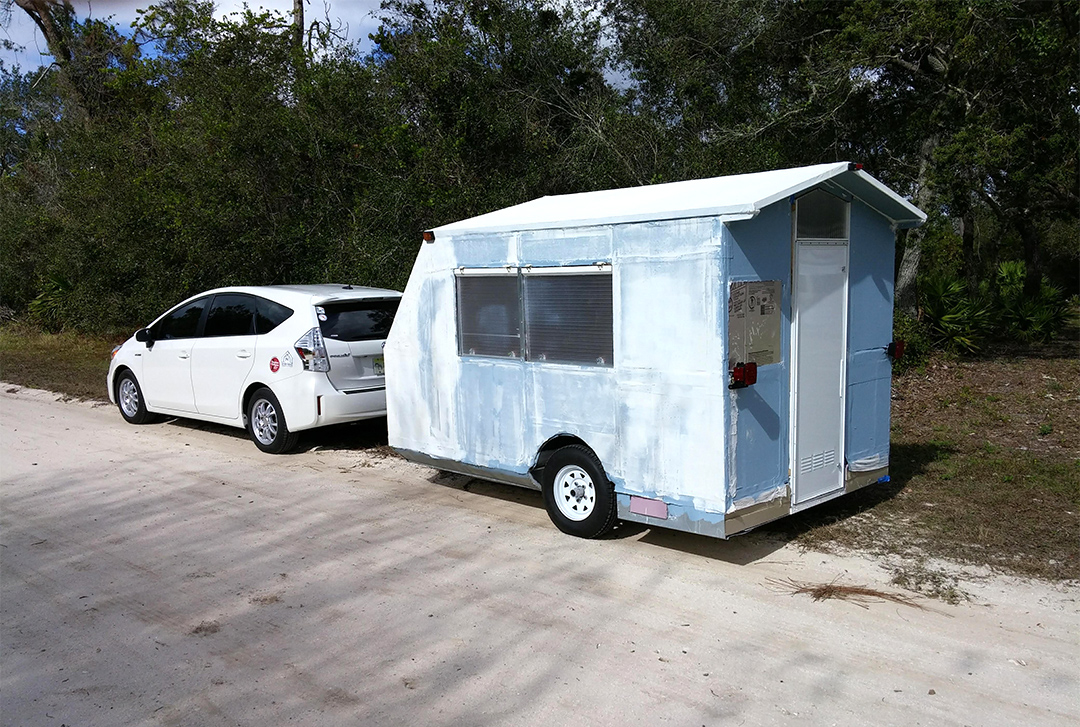
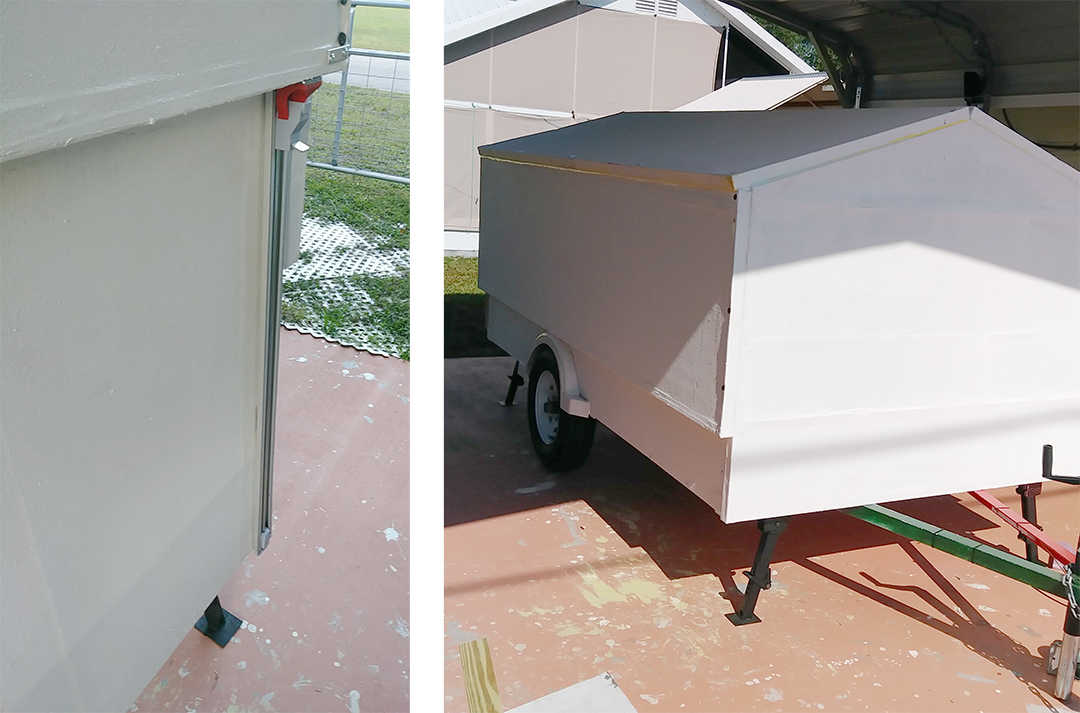

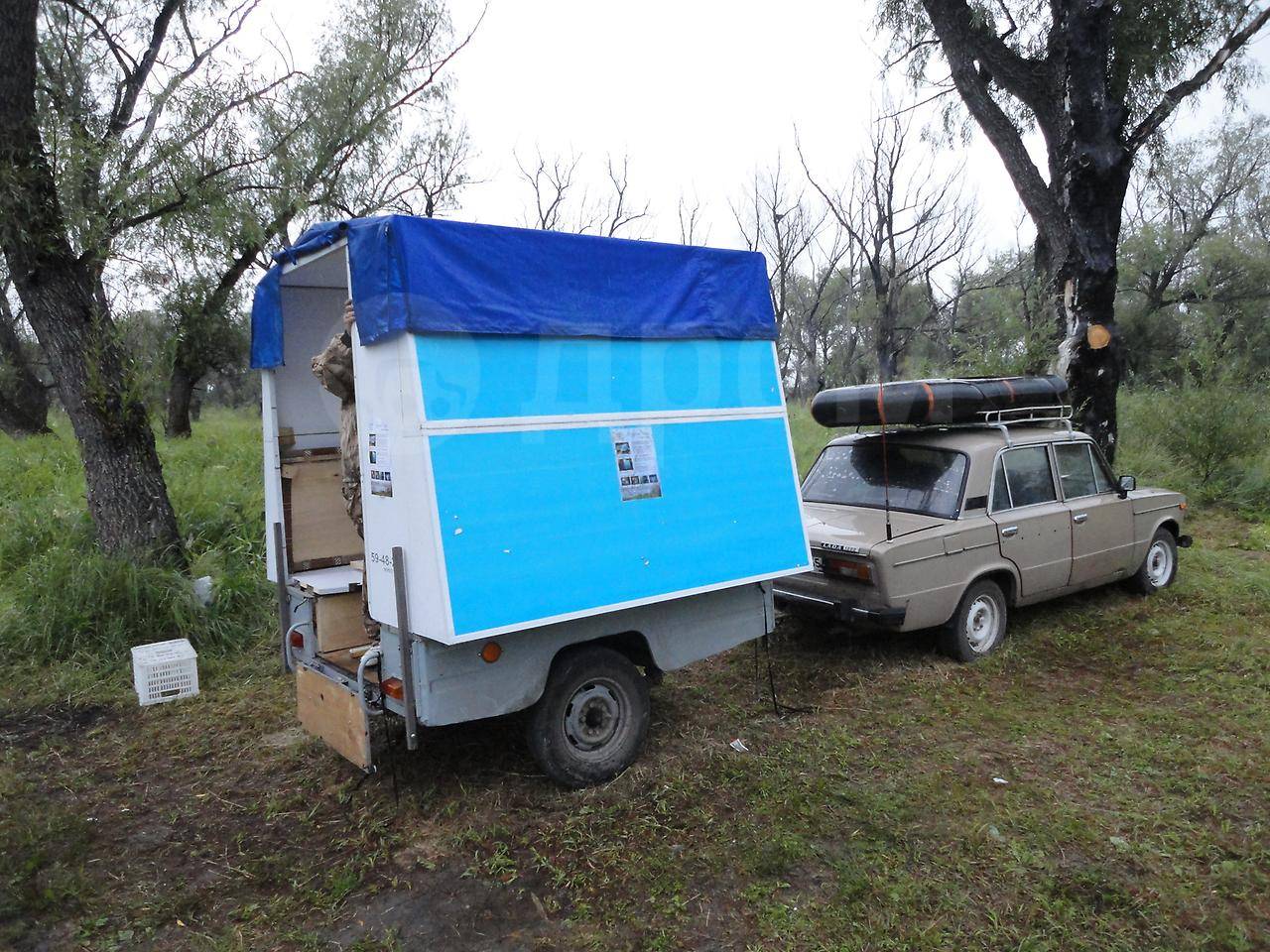
OP827 wrote:I see one little issue with the last two designs. Since the roof is lifted one side a a time the roof sides need some flexible overhang to shed water during storage and towing and both designs do not have that. They seem both to be created for winter time usage with no rain, just snow.
OP827 wrote:It is possible to solve with some heavy flexible membrane/rubber strip that is wider than two bifold side walls thicknesses together to weather seal the hinge between roof and side wall section. What do you think about addressing that gap?

It is not clear if they are the only support for the roof.
tony.latham wrote:It is not clear if they are the only support for the roof.
I think the images are computer renderings. It makes me wonder if the designer ever made a prototype.
I surely wouldn't want to spend a night in an unvented box without windows.
Tony
p.s. Where do you suppose water will end up running down the walls?



Fully agree, as I said "It is not clear if the plans are for fabric or solid sides, or if the author actually built one.”“I think the images are computer renderings. It makes me wonder if the designer ever made a prototype.”
Agreed, but again, it is not clear what his full plan is. The image is just part of an ad. I would want more detail before purchasing a plan, but $10 is pretty cheap.I surely wouldn't want to spend a night in an unvented box without windows. ...
Where do you suppose water will end up running down the walls?
Yet interest in DIY solutions persist! What if you replace “canvas sided pop up” with “tear drop”? I suspect the list of reasons many of us choose DIY over commercial is pretty long.If what you want is a canvas sided pop up, they are many good ones available ..... The types of lifting mechanisms you see in pop ups evolved because they work. If there was a simpler, cheaper, or more reliable way to do the job, I think you would see the commercial producers use is.
Yes, unless he has sliders around the poles attached to the top (not clear in figure). For a trailer with fabric sides/ends, that is exactly what I anticipate. Going up I would expect the side near the crank to lead the other side. Going down might reverse the tilt. I can imaging at least 2 ways to limiting tilt, but why is that important?? The early commercial tent trailers were opened by fully raising one end first. A tilted roof during erection was “part of the plan”.“The ropes or cables they appear to use won't guarantee that the top won't tip side to side as its raised.”
Yes, I fully agree. I would not have posted this for lack of information, but decided his unusual lift mechanism was adequately described by his CAD rendering. As such, I probably picked a poor title.“It's easy to design things in CAD that don't work as well as you thought they would or are difficult or impossible to actually build. I'd really like to see a prototype constructed and used for a time to work the bugs out of the design.”
Fully agree, that’s what I see this thread as being all-about. I posted this because I found the lift mechanism “unusual” - not totally unique or one of great genius, but interesting. I tried to point out advantages, limitations, improvements, and issues some builders might want to consider. BTW - Love the wrap-around screen. Great work!“I am a big fan of lifting tops! Travel small, camp tall!
I love seeing the different approaches.”
Return to Non-traditional Designs
Users browsing this forum: No registered users and 2 guests